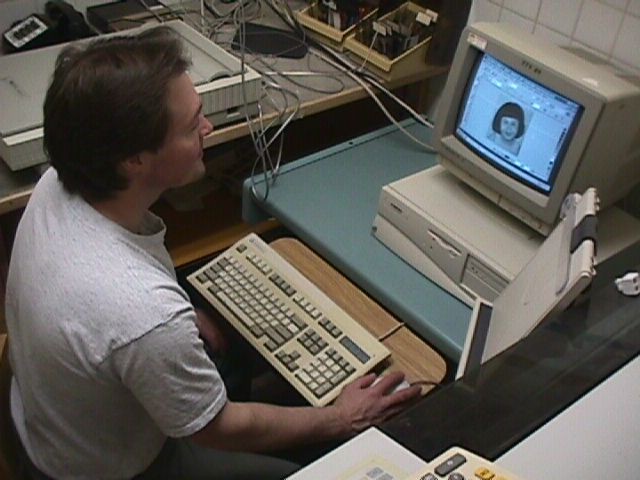|

|
What
areas are in this course?
Drawing-
techniques,
processes and terminology
Design-techniques,
processes and terminology
Architecture-history
Art History-history
Printmaking-techniques,
processes and terminology
Sculpture-techniques,
processes and terminology
Painting-techniques,
processes and terminology
|
|

|
To develop
understanding in:
art processes
techniques
experience in the refinement of basic
art skills
art terminology
solving problems creatively
analyzing artworks and art
processes for critical thinking
applying computer skills and
communication skills
To develop skills
in:
using
real and imaginary references as sources
for image creation
solving drawing, painting,
printmaking and design problems
understanding what constitutes a
work of art
thinking and solving problems
through a creative strategy
To create:
a portfolio of works which will represent
your artistic and
personal development
|
|

|
Work will be marked
according to:
the
criteria outlined in the assignments
After assignments
are grading:
marks
are posted in the 'my grades tool' and
are assessable by the student to view their grades at
any time.
grades for each assignment are
e-mailed to the student with feedback
individual assignments will be graded and totaled
towards the final mark.
Once submitted and graded:
assignments can be upgraded and
re-submitted for
increased marks.
Final marks-final day!
|
|

|
Marking Scheme
in each assignment you will have a marking
scheme outlined so you will know what I am looking for and where the marks are
coming from.
each assignment is worth a set amount of
marks towards the 100% possible in the course.
students will receive ongoing, an assessment of their assignment as x marks
(the marks they earned for that assignment) out of the total marks possible for that assignment.
Example- 4.5/5
A
percentage mark would be x (actual mark (4.5))/total possible mark (5)x 100 = % mark(90%)
Grading times will summarize
the total marks attained out of the total marks possible for that
section of the course and present a percentage mark to the parents and students
The actual Web-ct total mark at any time, is the accumulated marks of the
student out of the 100% possible marks for the course.
A student must get over 50 marks (50%)to pass the course
A zero (0) is the absence of an assignment turned in.
All marks are assigned according to the listed assignment evaluation
criteria which is in the course pages with the assignments.
If you have learned and improved you
will do OK, but you are marked on how well you understand, and complete
the assignments, so if you want a good mark, you will have to earn it.
|
|

|
Requirements should be followed.
If
the assignment requests 11x17 paper,
you'll have to make sure to get it.
It is part of the assignment, there is
a reason for that paper and to
fulfill the assignment directions need to be followed.
|
|

|
What
do I do?
I expect students to keep up with the
course schedule, or the schedule that you set for yourself. Falling behind is
difficult to get over
I will give you, throughout the Course, an opportunity to
upgrade your mark in each of the assignments by re-doing and
re-submitting the assignment. I want you to learn the concepts in this
Course and if it takes two tries for you to understand and demonstrate
that understanding then that's OK.
Unexpected circumstances may prevent that for some students at some time
during the semester.
Tell me about it ASAP and there will be no late penalties
|
|

|
How
difficult is this course?
I consider this to be a
medium difficulty
course and anyone putting in a consistent effort should be successful with the
assignments.
Anything less than that will show in your marks.
Students do fail this course if they do not do the work or do it below the
expectations of the assignment or their grade level.
|
|

|
What
do you need as reference
materials?
Most of the information needed for this
course is contained in the course material, or can be obtained on the
internet
As it is a practical course and revolves around an assignment based
curriculum, which is backed up
by an extensive technique
reference and picture library as
well as an Art Studio
|
|

|
What
do I do?
The student is expected to download and
print the student work schedule
Obtain and have for use all the requested course materials
Keep up with the student assignment schedule timetable for assignment
completion
Attend 3 studio sessions throughout the semester- times will be posted
E-mail in finished assignments for grading or drop off to
Chinook
College, Viscount Bennett Art Studio for grading
Pick up all graded materials turned
in
|
|

|
How
do I use this?
You are
expected to attend at least 3 'studio' sessions throughout the semester, in which the
class will be doing work on assignments, getting demonstrations, advice, etc.
Times for these sessions will be posted one month prior to each time.
You are expected to come with questions and any practical
demonstrations, tools materials etc. you might need
Onsite studio sessions are designed to
provide the student with an opportunity for studio time with help
|


















